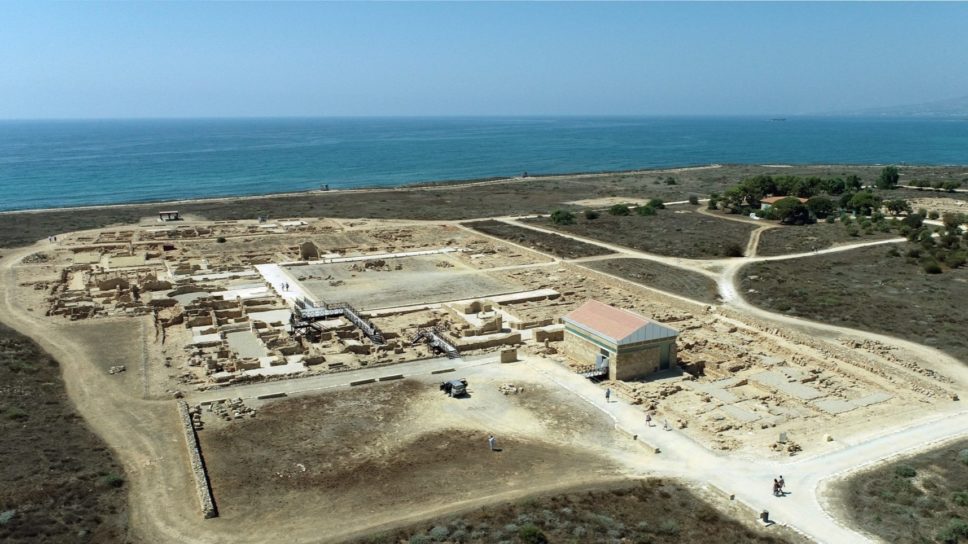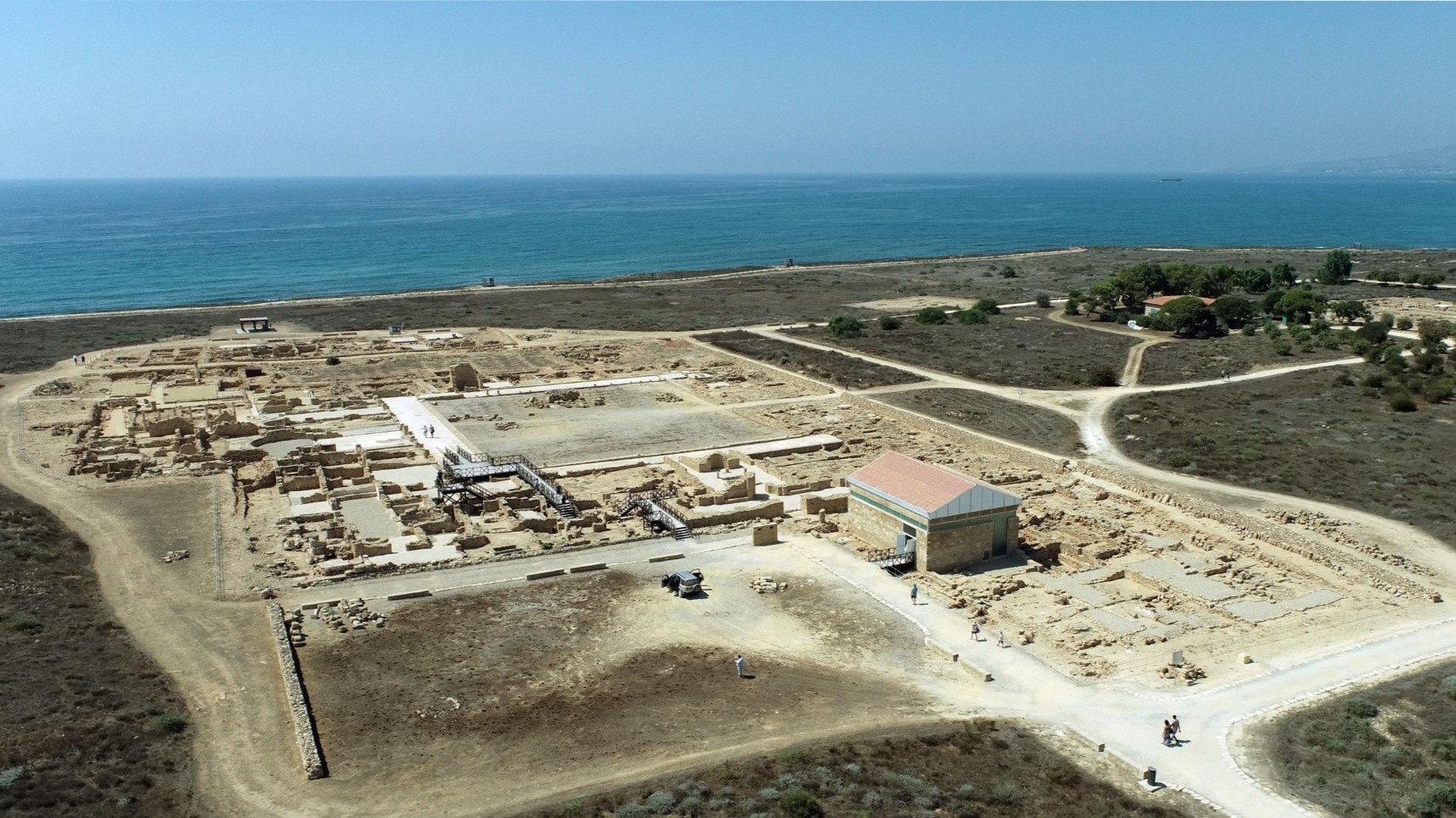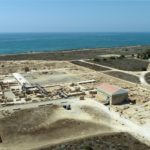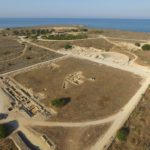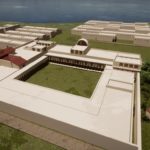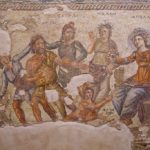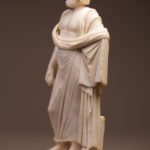In 2025, we celebrate the 60th anniversary of archaeological research conducted by the Polish Centre of Mediterranean Archaeology of the University of Warsaw (PCMA UW) at Nea Paphos, Cyprus. To mark this occasion, a series of scholarly and outreach events will be organized, including an international conference dedicated to Nea Paphos and an exhibition showcasing the history of the research. The exhibition will be on display in Poland and Cyprus. Additionally, June will see the official opening of the PCMA UW Research Centre in Cyprus, coinciding with both the anniversary celebrations and the joint Cypriot-Polish EU presidency.
The PCMA UW expedition has been active at the Paphos archaeological site since 1965, focusing on the residential district of Maloutena. This area has yielded spectacular discoveries, including one of Cyprus’ largest ancient structures: the Roman villa known as the Villa of Theseus. Believed to have been the residence of a Roman governor, the villa boasts a stunning mosaic of Theseus battling the Minotaur. Equally impressive mosaics have been uncovered in another Roman residence, the House of Aion.
These discoveries contributed to Paphos’ inscription on the UNESCO World Heritage List in 1980, which significantly boosted the region’s appeal to tourists. Today, visitors can admire these mosaics in the Kato Paphos Archaeological Park, while many of the discovered artifacts, such as marble statues—including the famous Armed Aphrodite and Asclepius, the god of healing—coins, terracottas, vessels, and wall paintings from the House of Aion, are exhibited at the Archaeological Museum in Paphos.
Recent Developments and Joint Research
In 2011, the Jagiellonian University joined the research efforts, focusing on the city’s Agora, the administrative and commercial heart of ancient Paphos. In 2019, the two expeditions merged into the “MAP Maloutena and Agora – Archaeological Project in Paphos, Cyprus,” led by Professor Ewdoksia Papuci-Władyka, who also oversees the PCMA UW Research Centre in Cyprus.
Generations of Scholars and International Cooperation
The PCMA UW research at Nea Paphos has been conducted under the leadership of distinguished scholars, including Professors Kazimierz Michałowski (1965–1970), Wiktor Andrzej Daszewski (1971–2007), and Dr. Henryk Meyza (2008–2019). Over the decades, several generations of Polish archaeologists and scientists from institutions such as the University of Warsaw, the Institute of Mediterranean and Oriental Cultures of the Polish Academy of Sciences, Jagiellonian University, Wrocław University of Science and Technology, Warsaw University of Technology, University of Hamburg, Academy of Fine Arts in Warsaw Faculty of Conservation and Restauration of Works of Art, and others, have contributed to the exploration of this ancient capital of the “Island of Aphrodite.” Their findings have been published in numerous academic papers, dissertations, and books, as well as presented at international conferences and seminars.
Strengthening Polish-Cypriot Relations
These long-standing archaeological projects have also fostered strong cultural and scientific ties between Poland and Cyprus. Notable events include the 50th-anniversary exhibition hosted by the Cyprus Museum in Nicosia and the commemoration of 55 years of Polish research in Paphos, the celebration of which had to be scaled down during the pandemic. In 2021, the visit of Polish President Andrzej Duda to the archaeological site underscored these achievements as part of celebrations marking 60 years of diplomatic relations between the two countries.
Upcoming Jubilee Events
In 2025, several initiatives will highlight the contributions of Polish archaeologists in Nea Paphos. A photographic exhibition titled “From Maloutena to the Agora” will open in Warsaw in mid-May, followed by showings in Krakow and other cities. Between May 20 and 23, the fourth Nea Paphos Colloquium will be held in Warsaw and Krakow, co-organized by the University of Warsaw, Jagiellonian University, Department of Antiquities of Cyprus, the University of Avignon, and HiSoMA (ENS de Lyon). In June, the official inauguration of the PCMA UW Research Centre in Paphos will take place alongside an exhibition recounting the history and achievements of Polish excavations.
In the fall, during the next archaeological season, Paphos residents and visitors will be invited to participate in outreach events at the site, offering a behind-the-scenes look at archaeological work.
Looking Ahead
Polish archaeological research in Nea Paphos combines tradition with innovation. The most recent work includes a National Science Centre grant project aiming to reconstruct the city’s urban layout and architecture through various historical periods which will result in 3D visualizations of the city through various historical periods. Future excavations in Maloutena and the Agora promise to reveal new insights into this ancient metropolis and its inhabitants. With the establishment of the PCMA UW Research Centre in Paphos, the prospects for further discoveries and collaboration remain bright.
-
Nea Paphos, bird eye’s view of the Maloutena area in 2019 // Nea Pafos, widok Maluteny z lotu ptaka w 2019 roku (Fot. Wojciech Ostrowski/Paphos Agora Project)
-
Bird eye’s view of the Nea Paphos Agora in 2019 / Widok na teren agory w Nea Pafos w 2019 roku (Fot. Wojciech Ostrowski/Paphos Agora Project)
-
Nea Paphos, reconstruction of the Villa of Theseus in its last phase, 4th-5th century // Nea Paphos, rekonstrukcja willi Tezeusza w ostatniej fazie istnienia (IV-V wiek) (3D reconstruction by Anna Kubicka-Sowińska & team of MAP)
-
9. Mosaic of Aion, panneau with the trial of Marsyas / Mozaika Aiona, panneau sądu nad Marsjaszem (fot. M. Jawornicki, 2015)
-
12. Asclepius / Asklepios (fot. M. Jawornicki, 2014)
-
11. Fragment of a wall painting from room 7 in the House of Aion, the muse Euterpe / Fragment malowidła z pomieszczenia 7 w Domu Aiona, muza Euterpe (fot. M. Jawornicki, 2014)

